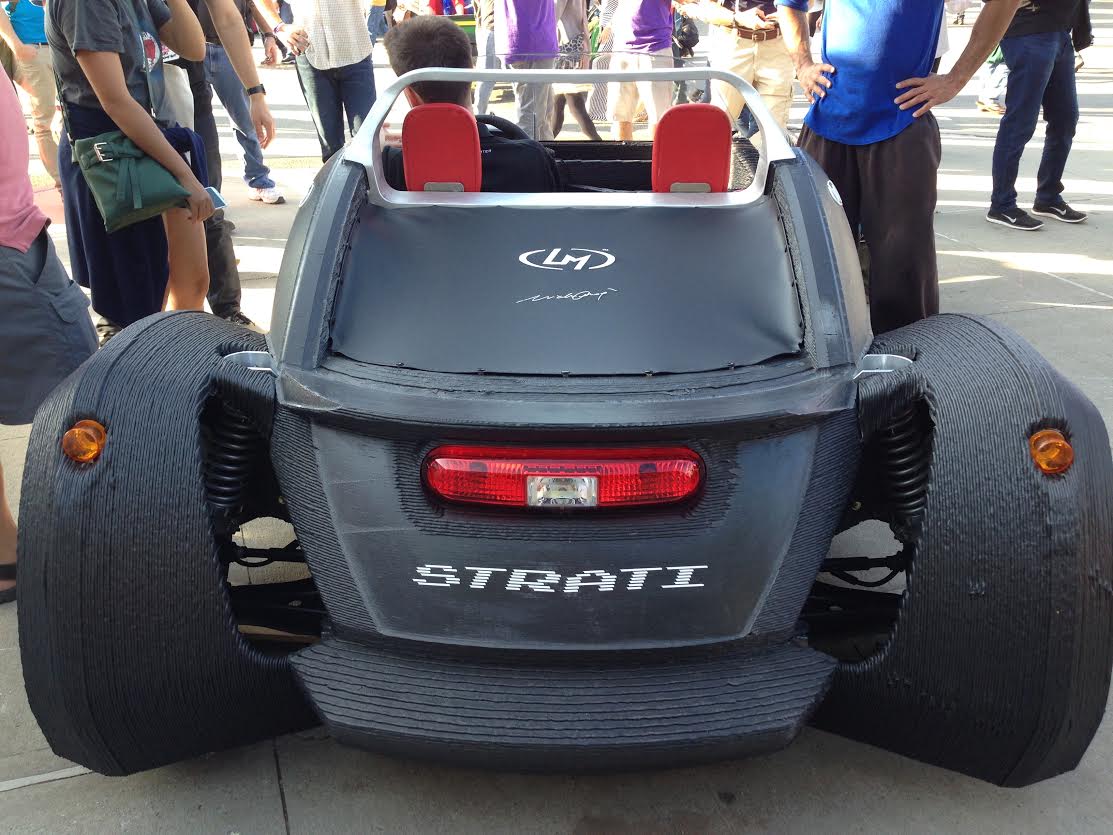 As you know, 3D printing is a whole new level of DIY. Here’s what interests me: the rise of 3D printing is concurrent with another kind of DIY revolution. Together, these new developments make for what will be a whole new economic model.
As you know, 3D printing is a whole new level of DIY. Here’s what interests me: the rise of 3D printing is concurrent with another kind of DIY revolution. Together, these new developments make for what will be a whole new economic model.
The so-called gig economy is taking off—it’s everywhere. A few examples: Wired.com says, “The gig economy is a bellwether for a broader shift to an Internet-powered workforce.” This workforce includes 400,000 Uber drivers, and there are myriad other companies besides Uber harnessing software and the Internet to create on-demand work. Elsewhere, TSheets Time Tracking, a cloud-based app that allows companies to log gig employee hours, has this to say:
“It’s hard to deny that the prevalence of opportunities combined with advanced and expanding technology in the hands of the masses has created a dynamic that is changing business as we know it.”
Sound familiar? 3D printing is also an advanced and expanding technology. Anyone can buy a 3D printer and it has the potential to change business completely. This is more than just a fad—it’s “constantly improving” and “leading to new discoveries and more opportunities for creative ingenuity.” People are discovering they can 3D print everything, from a pizza to organic tissue (bioprinting) to an RPG board game:
Or a 3D version of a child’s drawing:
Imagine what will happen once the gig economy adapts to the 3D printing possibilities. This will be a world where 3D printers replace traditional manufacturing and retailers. A world where people are prosumers, not consumers.
Already, there are companies such as Shapeways, a marketplace and community that creates (almost) anything you want, on-demand, through 3D printing. Or, there’s 3D Hubs, which connects you to the nearest 3D printer, facilitating sharing and on-demand production. And, there’s Styleshapes, a marketplace for DIY 3D printed jewelry that also invites newcomers to “create personalized items with free DIY tools.”
These companies don’t differ that much from Uber. They’re using the Internet to connect people with a service. The company makes money as a platform. The users can make money by selling their products, or they can be on the other side and buy products. It’s all on-demand. Users get a ‘gig’ as creators. Consumers benefit because they are getting entirely unique creations.
The potential for disruption
Not long ago, I wrote about entrepreneurs disrupting the auto industry. Local Motors is a Phoenix, AZ automaker with the mission of 3D printing an electric, autonomous car. They brought a 3D printed electric car, dubbed Strati, to fruition at the International Manufacturing Technology Show in Chicago. It took only 44 hours to do it.
 Local Motors also announced a design competition. The $7,500 award winner is now collaborating with three universities to create the first 3D printed, autonomous, electric vehicle.
Local Motors also announced a design competition. The $7,500 award winner is now collaborating with three universities to create the first 3D printed, autonomous, electric vehicle.
What does this have to do with the gig economy? Right now, Uber competitor Lyft is working with GM to develop autonomous cars for their on-demand service. Uber plans to have an autonomous car service by 2030. Driverless Uber and Lyft cars would put gig workers out of business.
But if the Local Motors project succeeds, anyone will be able to make their own autonomous car. Yes this is hypothetical, but it’s illustrative of 3D printing’s potential to disrupt the gig economy. If you can create your own autonomous car, you can compete with Uber and Lyft, using the car to shuttle people all over the place.
This is lofty, but feasible, territory for 3D printing. For now, we’ll have to be content with GM’s pet project, the 3Doodler 3D drawing pen.
Daniel Matthews is a freelance writer from Boise, ID who loves to write about tech and the new economy. Please find him on Twitter.
Subscribe to Our Email Newsletter
Stay up-to-date on all the latest news from the 3D printing industry and receive information and offers from third party vendors.
Print Services
Upload your 3D Models and get them printed quickly and efficiently.
You May Also Like
Reinventing Reindustrialization: Why NAVWAR Project Manager Spencer Koroly Invented a Made-in-America 3D Printer
It has become virtually impossible to regularly follow additive manufacturing (AM) industry news and not stumble across the term “defense industrial base” (DIB), a concept encompassing all the many diverse...
Inside The Barnes Global Advisors’ Vision for a Stronger AM Ecosystem
As additive manufacturing (AM) continues to revolutionize the industrial landscape, Pittsburgh-based consultancy The Barnes Global Advisors (TBGA) is helping shape what that future looks like. As the largest independent AM...
Ruggedized: How USMC Innovation Officer Matt Pine Navigates 3D Printing in the Military
Disclaimer: Matt Pine’s views are not the views of the Department of Defense nor the U.S. Marine Corps Throughout this decade thus far, the military’s adoption of additive manufacturing (AM)...
U.S. Congress Calls Out 3D Printing in Proposal for Commercial Reserve Manufacturing Network
Last week, the U.S. House of Representatives’ Appropriations Committee moved the FY 2026 defense bill forward to the House floor. Included in the legislation is a $131 million proposal for...

































